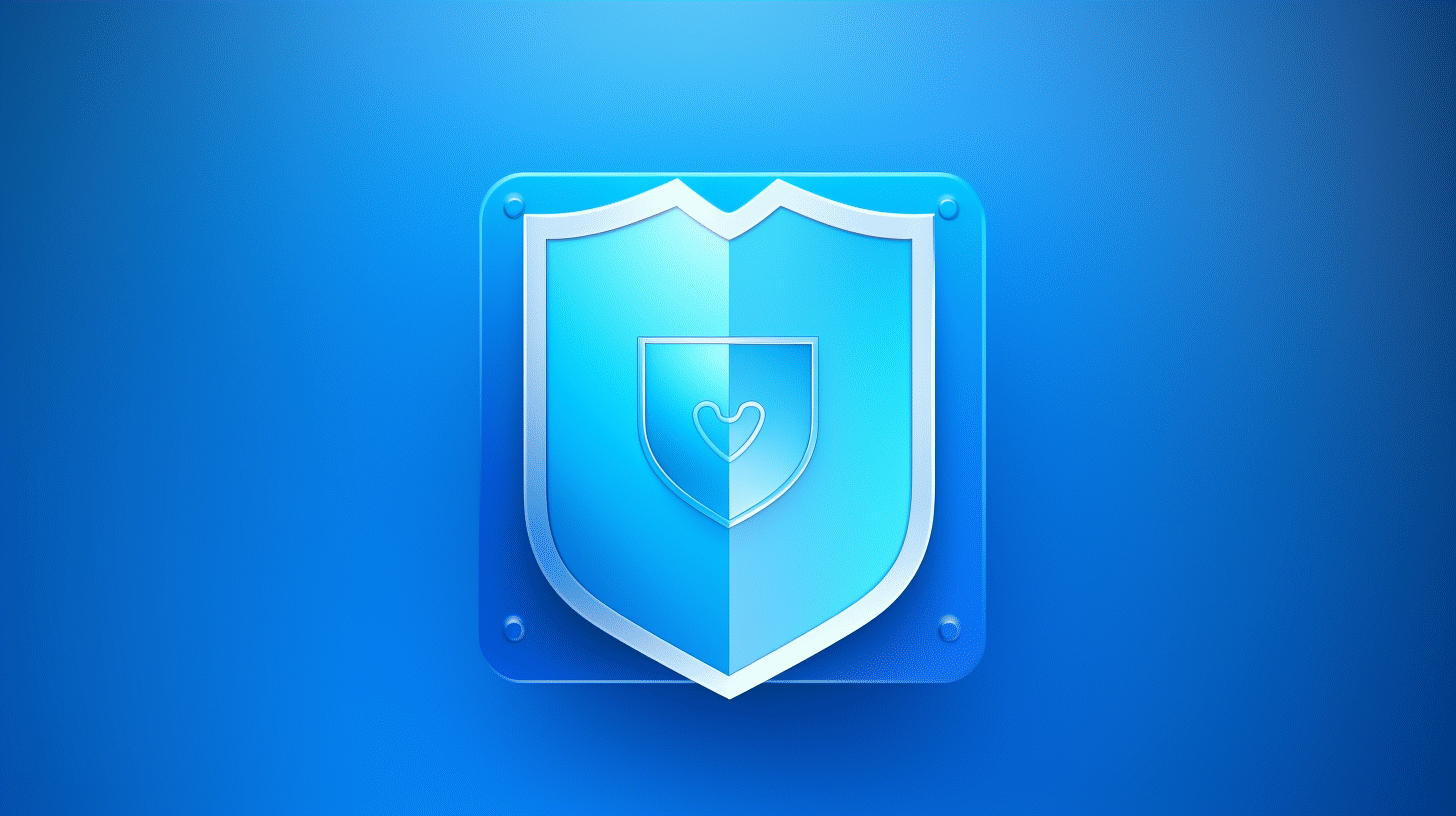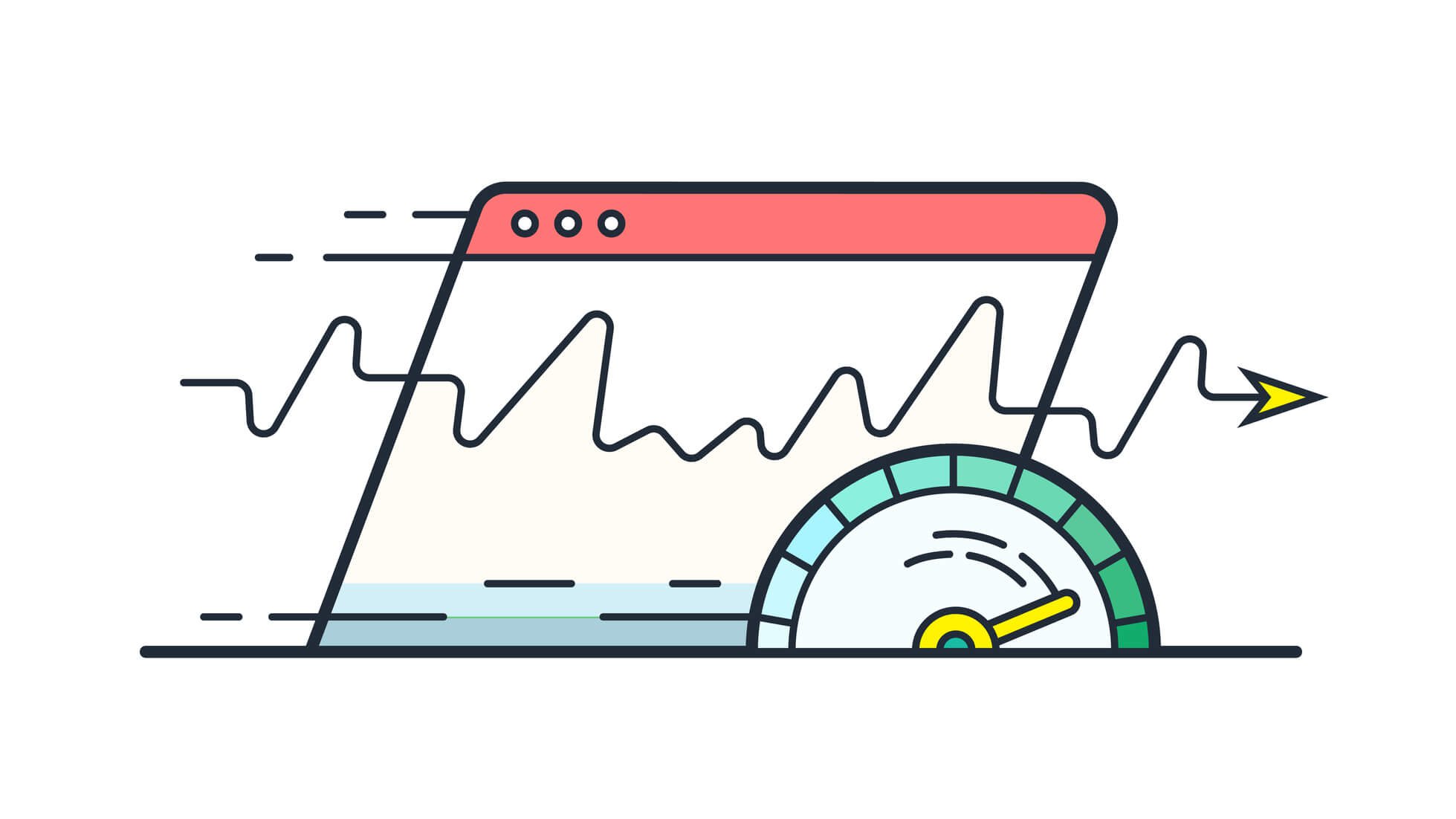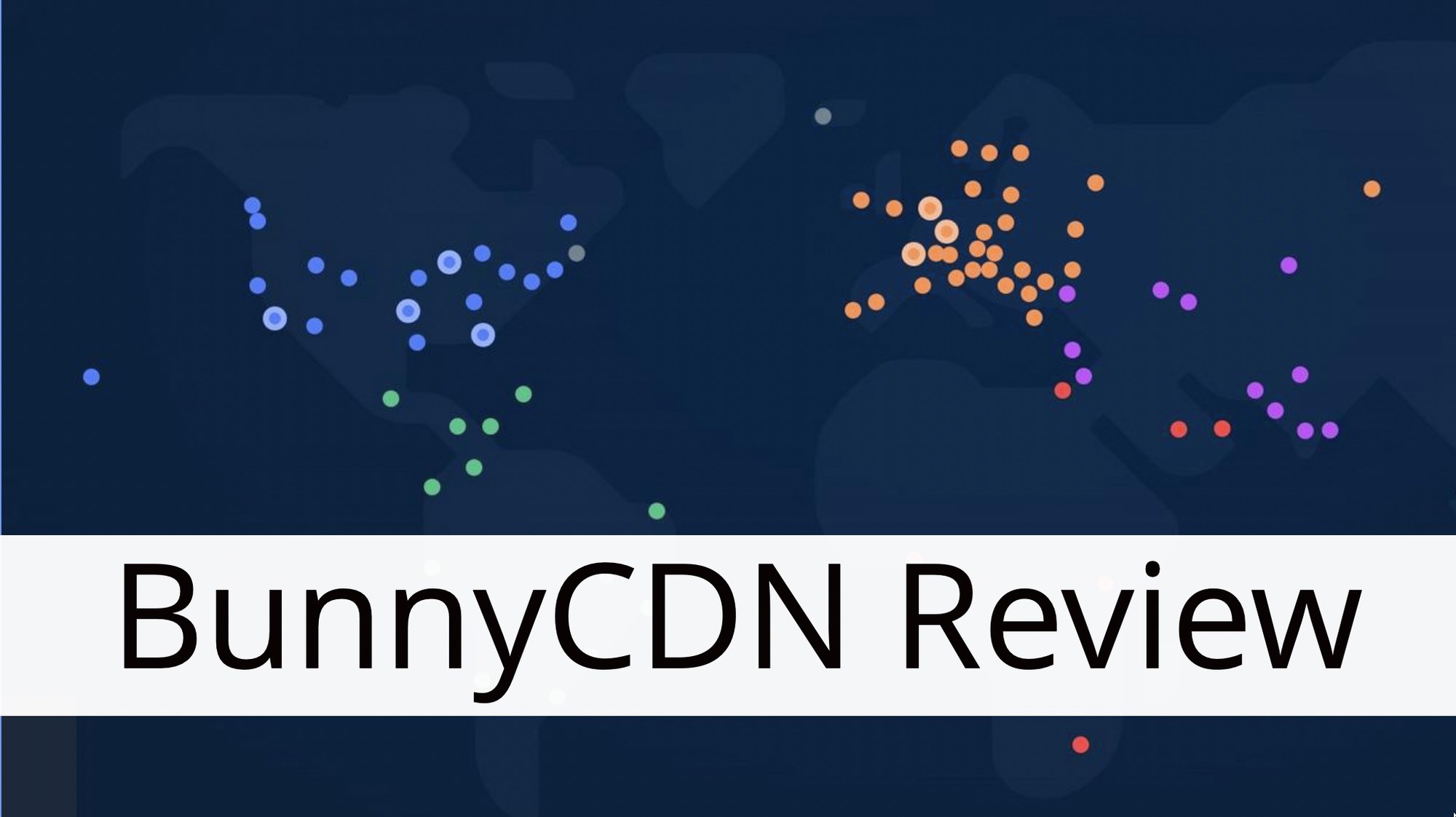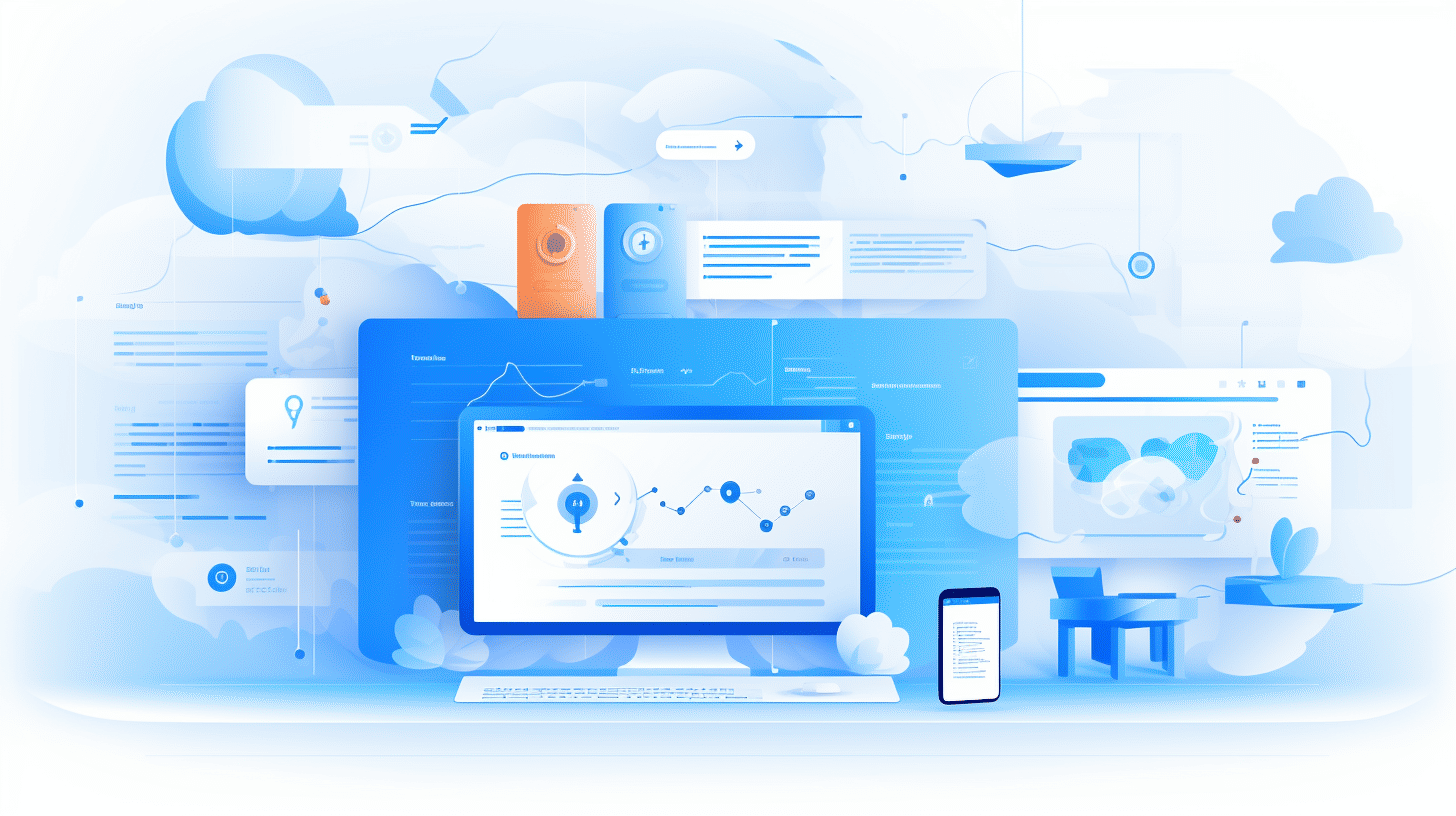In today’s digital age, where nearly every aspect of our lives is connected to the internet, it’s crucial to prioritize website security. Cybercrime is a constant threat that can have devastating consequences for businesses of all sizes. From data breaches to compromised customer information, the impact of cyberattacks can be far-reaching, causing financial loss, reputational damage, and even legal repercussions.
But what exactly does website security entail? It goes beyond simply protecting sensitive data or implementing firewalls. Website security encompasses a comprehensive set of measures designed to safeguard your online presence from threats such as hackers, malware, and phishing attempts. It involves not only reactive measures to prevent attacks but also proactive steps to identify vulnerabilities and strengthen your defenses.
Investing in robust website security is an essential component of running a successful and trustworthy online business. By implementing the right security measures, you can build trust with your customers, protect your valuable data, and ensure the continuity and growth of your business.
So, why is website security so important for growing your business? Here are a few key reasons:
- Protection of customer data: Safeguarding your customers’ personal and financial information is crucial for building trust and maintaining loyalty. A secure website gives your customers confidence in your ability to protect their data, encouraging repeat business and positive word-of-mouth referrals.
- Compliance with regulations: Depending on your industry, you may be subject to various regulations that require you to ensure the security and privacy of user data. Failing to comply with these regulations can lead to severe legal consequences and damage to your reputation.
- Prevention of financial loss: Cyberattacks can result in financial loss due to direct theft, legal fees, and damage control efforts. By investing in website security, you can minimize the risk of financial losses and keep your business on solid financial footing.
- Maintenance of brand reputation: A single data breach or security incident can damage your brand’s reputation irreversibly. Customers are increasingly concerned about security, and a breach can lead to loss of trust, negative reviews, and a decline in sales.
- Peace of mind: Running a business is complex enough without the constant worry of cyber threats. Implementing comprehensive website security measures provides you with peace of mind, allowing you to focus on growing your business with confidence.
So, whether you’re a small startup or an established enterprise, prioritizing website security is crucial for long-term success in today’s digital landscape. In the following sections, we will delve deeper into the cost of cybercrime, the nature of cyber attacks, best practices, and emerging trends in cybersecurity to equip you with the knowledge to protect your business effectively. 🛡️
Cost of Cybercrime
Introduction:
In today’s digital age, cybercrime has become a significant threat to individuals, businesses, and even governments. The cost of cybercrime is not just limited to financial losses but also encompasses the impact on reputation, customer trust, and overall stability. In this section, we will delve into two crucial aspects of the cost of cybercrime: data breaches and future predictions.
Data Breaches
Data breaches are a nightmare for organizations, as they can expose sensitive information, cause significant financial losses, and damage the trust of their customers. Here are some key insights related to the cost of data breaches:
- The average cost of a data breach in 2023 was $4.45 million1. This staggering figure includes various expenses such as incident response, forensic investigations, legal fees, customer notification, and recovery efforts.
- Beyond the immediate financial impact, data breaches can have long-term repercussions. Organizations may suffer from reputational damage, loss of customers, and increased regulatory scrutiny. Rebuilding trust takes time and investments in robust cybersecurity measures.
- Small and medium-sized enterprises (SMEs) are not immune to data breaches. In fact, they often bear a disproportionate cost compared to larger organizations. The lack of adequate resources and expertise makes them an attractive target for cybercriminals.
- It’s not only the direct costs that organizations need to consider. Indirect costs, such as the loss of intellectual property, business disruption, and potential legal liabilities, can further escalate the overall cost of a data breach.
Future Predictions
The threat landscape of cybercrime continues to evolve rapidly, presenting new challenges for individuals and businesses. Here are some future predictions that highlight the expected cost of cybercrime:
- Cybercrime is expected to cost $8 trillion in 2023 and reach a staggering $10.5 trillion by 20252. The increasing complexity of cyber attacks, the widespread use of connected technologies, and the expansion of digital ecosystems contribute to this alarming projection.
- Ransomware attacks, which involve encrypting the victim’s data and demanding a ransom for its release, are anticipated to become even more prevalent. Cybercriminals are adapting their tactics and targeting both individuals and organizations of all sizes.
- The Internet of Things (IoT) brings convenience and connectivity, but it also introduces new vulnerabilities. As more devices become interconnected, the potential attack surface for cybercriminals expands, leading to more sophisticated and damaging cyber attacks.
- Artificial intelligence (AI) and machine learning (ML) hold promise in combating cyber threats, but they can also be utilized by cybercriminals to enhance their attacks. Techniques, such as AI-powered phishing and deepfake technologies, demand increased vigilance and proactive defense strategies.
When it comes to cybercrime, staying one step ahead is crucial. As the cost of cybercrime continues to rise, individuals, businesses, and governments must prioritize cybersecurity measures to protect themselves and mitigate potential losses.
“The cost of cybercrime is not only measured in financial terms but also in the long-lasting impact it can have on organizations and individuals alike.”
🔍 Did you know? The term “cybercrime” was coined in the late 1970s and was initially used to describe crimes committed using computers and information technology. Since then, cybercrime has expanded to encompass a broad range of malicious activities in the digital realm.
Cybercrime Statistics
With the rapid advancement of technology, cybercrime has become an ever-growing threat in today’s digital world. From data breaches to identity theft, cybercriminals continue to exploit vulnerabilities and wreak havoc on individuals and organizations alike. To truly understand the gravity of the situation, let’s delve into some eye-opening cybercrime statistics.
Global Shortage of Cybersecurity Professionals
As the demand for cybersecurity expertise increases, there is a glaring shortage of professionals trained to combat cyber threats. According to recent projections, the global shortage of cybersecurity professionals is expected to reach a staggering 3.5 million by 2023[1]. This scarcity puts organizations at a significant disadvantage when it comes to defending against cyber attacks and reinforces the need for businesses to prioritize robust cybersecurity measures.
Company Data Exposure
Data breaches have become a distressingly common occurrence in today’s interconnected digital landscape. One area of concern is the exposure of sensitive company data, including software-as-a-service (SaaS) applications. Shockingly, studies have found that approximately 10% of a company’s SaaS data is exposed to all employees, increasing the risk of unauthorized access[2]. Furthermore, 6% of this exposed data is even accessible to the public on the internet. These findings underscore the importance of implementing strict access controls and encryption protocols to safeguard critical business information.
Rise in Records Stolen
The scale of data theft perpetrated by cybercriminals is mind-boggling. It is projected that by 2023, over 33 billion records will be stolen by cybercriminals[3]. These stolen records contain sensitive personal information such as names, addresses, social security numbers, and financial data of individuals and organizations. Such data breaches can have severe consequences, leading to identity theft, financial loss, and reputational damage.
In light of these alarming statistics, it is evident that cybersecurity should be a top priority for individuals and organizations alike. By investing in robust security measures, staying educated about emerging threats, and fostering a culture of security awareness, we can work towards mitigating the impact of cybercrime and protecting ourselves in an increasingly connected world.
[1]: Shortage of 3.5 million cybersecurity professionals globally in 2023
[2]: 10% of a company’s SaaS data is exposed to all employees and 6% is open to the internet
[3]: Over 33 billion records projected to be stolen by cybercriminals by 2023
Micro-Business and Cybersecurity
Micro-businesses, the small entrepreneurial ventures that play a significant role in the global economy, are increasingly becoming targets for cyberattacks. These small businesses often operate with limited resources and may not have the same level of cybersecurity measures in place as larger corporations. As a result, they are seen as low-hanging fruit for cybercriminals who are looking to exploit vulnerabilities and gain unauthorized access to sensitive information.
According to recent data, the proportion of micro-businesses listing cybersecurity as a high priority dropped to 68% in 20231. This decline is concerning because it indicates that some micro-business owners may not fully grasp the potential risks they face or the importance of implementing robust cybersecurity measures. As cyber threats continue to evolve and become more sophisticated, it is crucial for micro-business owners to be proactive in protecting their organizations from potential attacks.
The Implications of Cyberattacks on Micro-Businesses
Cyberattacks can have severe consequences for micro-businesses, including financial losses, reputational damage, and potential legal ramifications. Here are some key implications that micro-business owners should be aware of:
- Financial Losses: Cyberattacks can result in financial losses due to theft of funds, business disruption, and the cost of remediation efforts. Small businesses may struggle to recover from such financial setbacks, making them particularly vulnerable.
- Reputational Damage: A cyberattack can damage a micro-business’s reputation, leading to a loss of customer trust and loyalty. This can have long-term implications on customer retention and acquisition efforts.
- Legal Ramifications: Depending on the nature of the attack, micro-businesses may face legal consequences if they fail to protect sensitive customer data adequately. Compliance with data privacy regulations is essential to avoid penalties and legal liabilities.
Cybersecurity Best Practices for Micro-Businesses
As a micro-business owner, it’s crucial to prioritize cybersecurity to protect your organization and customer data. Here are some best practices you can implement:
- Educate Yourself and Your Employees: Stay informed about the latest cybersecurity threats and best practices. Train your employees to identify phishing attempts, use strong passwords, and practice safe browsing habits.
- Update and Patch Systems Regularly: Keep your software, applications, and devices up to date with the latest security patches. Cybercriminals often exploit vulnerabilities in outdated systems.
- Implement Strong Password Policies: Require employees and customers to create complex passwords and enable multi-factor authentication wherever possible. Regularly change passwords, especially for sensitive accounts.
- Backup Data Regularly: Regularly back up your data to a secure offsite location. This ensures that even if you fall victim to a ransomware attack, you can restore your data without paying the ransom.
- Use Secure Network Connections: Encrypt your network connections and use virtual private networks (VPNs) when accessing sensitive information remotely. Public Wi-Fi networks are particularly risky as they can be easily compromised.
Remember, investing in cybersecurity is a proactive measure that can save your micro-business from potential cyber threats and their detrimental consequences. By prioritizing cybersecurity and implementing best practices, you can mitigate risks and safeguard your organization’s sensitive information.
1 Source
The Nature of Cyber Attacks
In today’s interconnected world, the threat of cyber attacks has become a harsh reality for individuals, businesses, and governments alike. Cybercriminals are constantly evolving their tactics and exploiting vulnerabilities to gain unauthorized access to sensitive information. Understanding the nature of these attacks is crucial in order to protect ourselves and stay one step ahead of the perpetrators.
Cyber Attacks Increase
🔍 Extra Information: In Q3 2023, there was a 6.5% increase in cyber attacks.
Cyber attacks have been on the rise in recent years, with no signs of slowing down. Hackers are becoming more sophisticated and are constantly finding new ways to breach security systems. This increase in cyber attacks can be attributed to several factors, including the following:
- Rapid advancement in technology: As technology continues to evolve at an unprecedented pace, cybercriminals are quick to exploit any vulnerabilities that may arise.
- Increasing reliance on digital infrastructure: With the advancement of digitalization, individuals and businesses are storing more sensitive data online, making them attractive targets for cybercriminals.
- Lucrative nature of cybercrime: Cybercrime has become a highly profitable business for hackers, with the potential to yield huge monetary gains through activities such as ransomware attacks and data theft.
Identifying and Containing Breaches
🔍 Extra Information: On average, it takes 277 days to identify and contain a breach in 2023.
Identifying and containing breaches is a critical step in mitigating the damage caused by cyber attacks. Unfortunately, it’s not always easy to detect when a breach has occurred. Cybercriminals often employ sophisticated techniques to hide their tracks and remain undetected within the system.
- The importance of proactive monitoring: Implementing robust monitoring systems can help in the early detection of breaches and suspicious activities within a network. This allows organizations to respond promptly and contain the damage.
- Incident response plans: Having a well-defined incident response plan in place is crucial for effectively managing a cyber attack. This plan should outline the steps to be taken in the event of a breach, including communication protocols, containment measures, and recovery processes.
Emerging Cybersecurity Threats
🔍 Extra Information: AI-powered attacks, ransomware, and supply chain attacks will be major threats in 2024.
As technology advances, so do the techniques employed by cybercriminals. It’s important to stay informed about emerging cybersecurity threats in order to adequately protect against them. Here are some threats to watch out for in the coming year:
- AI-powered attacks: Artificial intelligence is being used by hackers to automate attacks, making them more sophisticated and difficult to detect. These attacks leverage machine learning algorithms to bypass traditional security measures.
- Ransomware: Ransomware attacks continue to be a major concern, with cybercriminals encrypting victims’ data and demanding a ransom in exchange for its release. These attacks can cause significant financial and reputational damage to individuals and organizations.
- Supply chain attacks: Cybercriminals are increasingly targeting the supply chain to gain unauthorized access to networks. By breaching a vendor’s system, they can then exploit the trust placed in that vendor to gain access to larger networks.
Anchor Link: To learn more about strategies for malware removal, click here.
State of Global Cybersecurity Market
The global cybersecurity market is currently experiencing rapid growth and shows no signs of slowing down. In fact, it is projected to reach a staggering $266 billion by 2023[1]. This surge in demand for cybersecurity solutions is driven by the increasing frequency and sophistication of cyber threats that individuals, businesses, and governments face on a daily basis.
Factors Contributing to the Growth of the Cybersecurity Market:
- Rise in Cyber Attacks: With cyber attacks becoming more prevalent and damaging, organizations are prioritizing their cybersecurity strategies to protect their sensitive data and digital assets.
- Emerging Technologies: The proliferation of emerging technologies such as the Internet of Things (IoT), cloud computing, and artificial intelligence (AI) has created new vulnerabilities, requiring robust cybersecurity measures to prevent potential breaches.
- Stringent Data Protection Regulations: Governments globally have enacted strict data protection regulations, such as the General Data Protection Regulation (GDPR) in the European Union. These regulations impose hefty fines and penalties for organizations that fail to safeguard customer data, driving the need for robust cybersecurity solutions.
- Growing Awareness: Increased awareness among individuals and businesses about the potential risks posed by cyber threats has led to a greater demand for cybersecurity products and services.
- Digital Transformation Initiatives: As businesses undergo digital transformation and shift their operations online, there is a greater need for cybersecurity solutions to protect against cyber risks and ensure business continuity.
Challenges in the Cybersecurity Market:
While the cybersecurity market presents significant growth opportunities, it also faces several challenges that need to be addressed:
- Shortage of Skilled Professionals: There is a shortage of skilled cybersecurity professionals to meet the growing demand for expertise in this field. This shortage hampers organizations’ ability to effectively manage and respond to cyber threats.
- Complex and Evolving Threat Landscape: Cyber threats are constantly evolving and becoming more sophisticated. This dynamic nature of cyber threats necessitates continuous innovation and adaptation in cybersecurity solutions to stay ahead of malicious actors.
- Budget Constraints: Many organizations, particularly small and medium-sized enterprises (SMEs), face budget constraints when it comes to investing in robust cybersecurity solutions. This limitation can leave them vulnerable to cyber attacks.
In conclusion, the global cybersecurity market is experiencing significant growth due to the rising tide of cyber threats. Organizations across sectors are investing in advanced cybersecurity solutions to protect themselves from potential data breaches and financial losses. However, challenges such as the shortage of skilled professionals and budget constraints need to be addressed to ensure effective cybersecurity measures and safeguard against evolving threats.
[1]: Global Cybersecurity Market Size, Share, Industry Analysis, Growth, Trends, Forecast 2020 – 2025
Best Practices and Vulnerabilities in Cybersecurity
🔒 Introduction to Cybersecurity Best Practices and Vulnerabilities 🔒
With the ever-increasing reliance on technology and the rise of digital business operations, cybersecurity has become a crucial aspect of protecting sensitive information from malicious attacks. As businesses and individuals navigate the digital landscape, it is essential to be aware of both the best practices that bolster cybersecurity and the vulnerabilities that pose a significant risk.
Web Application Security
Web applications play a vital role in business operations, providing a platform for customer interactions, data storage, and online transactions. However, they are also prime targets for cybercriminals, who exploit vulnerabilities for personal gain. Consider these eye-opening statistics:
- 17% of cyberattacks specifically target vulnerabilities in web applications[1].
- Up to 98% of web applications are vulnerable to attacks such as phishing, ransomware, and DDoS attacks[2].
To mitigate these risks, implementing robust web application security practices is imperative. This includes:
- Regular Vulnerability Scanning: Conduct routine scans to identify and address potential vulnerabilities promptly.
- Implement Strong Authentication: Utilize multi-factor authentication and enforce strong password policies to prevent unauthorized access.
- Patch Management: Stay up-to-date with security patches and software updates to address known vulnerabilities in web applications.
- Secure Coding Practices: Employ secure coding techniques to develop web applications that are resistant to common attack vectors.
- Web Application Firewalls: Deploy web application firewalls to filter out malicious traffic and protect against known attack patterns.
- Regular Backups: Regularly back up web application data to restore operations in case of a cyber attack or data loss event.
By implementing these best practices, organizations can significantly enhance their web application security and ensure the protection of sensitive data.
Cyber Hygiene
Cyber hygiene refers to maintaining good security practices and habits to minimize the risk of a cyber attack. Just as personal hygiene prevents the spread of illness, practicing proper cyber hygiene is essential to safeguarding digital assets and preventing unauthorized access. Some key elements of cyber hygiene include:
- Strong Passwords: Use a combination of uppercase and lowercase letters, numbers, and special characters for passwords. Avoid reusing passwords across multiple accounts.
- Regular Software Updates: Keep operating systems, applications, and security software up to date to patch vulnerabilities and protect against emerging threats.
- Securing Devices: Enable automatic screen lockout, encrypt sensitive data, and use biometric authentication on devices.
- Phishing Awareness: Educate employees and individuals about identifying phishing attempts and avoiding suspicious emails, links, and downloads.
- Wi-Fi Security: Use secure Wi-Fi networks, avoid public Wi-Fi for sensitive transactions, and enable encryption and authentication protocols.
By incorporating these cyber hygiene practices into daily routines, individuals and organizations can significantly reduce the risk of falling victim to cyber attacks.
Threat Intelligence
In the fast-evolving landscape of cyber threats, organizations need to stay one step ahead of cybercriminals. This is where threat intelligence comes into play. Threat intelligence involves the systematic collection and analysis of data to identify potential threats and develop proactive security measures. Here are some key aspects of leveraging threat intelligence:
- Real-Time Monitoring: Continuously monitor for potential threats and security incidents using automated tools and threat intelligence feeds.
- Proactive Threat Hunting: Analyze patterns, indicators of compromise (IOCs), and emerging attack vectors to identify potential threats and vulnerabilities.
- Collaboration and Sharing: Participate in threat intelligence communities, share information, and collaborate with industry peers to stay informed about evolving threats.
- Tailored Security Measures: Implement security controls and protocols based on threat intelligence insights to safeguard against specific threats relevant to the organization.
By embracing threat intelligence as part of their cybersecurity strategy, organizations can enhance their ability to detect and respond to emerging threats effectively.
🔒 Conclusion: Prioritizing Cybersecurity Best Practices 🔒
As cyber threats continue to evolve and grow more sophisticated, it is vital for organizations and individuals to prioritize cybersecurity best practices. Robust web application security, cyber hygiene, and leveraging threat intelligence are crucial steps in safeguarding digital assets and protecting sensitive information. By staying proactive, maintaining good security habits, and staying informed about potential threats, we can maintain a secure digital environment for all. So, start implementing these best practices today and ensure the protection of your digital assets!
Source: Protecting Your WordPress Website
Cybersecurity Trends
In this rapidly evolving digital landscape, where technology plays an integral role in our daily lives, the need for robust cybersecurity measures is more crucial than ever. Cyber threats constantly evolve, making it essential for organizations and individuals to stay updated on the latest cybersecurity trends. Here, we will explore three key trends that are shaping the cybersecurity landscape: AI governance, improved security, and AI-powered cybercrime.
AI Governance
Artificial Intelligence (AI) has become a game-changer in numerous industries, including cybersecurity. As AI technology continues to advance, it brings both opportunities and challenges. One of the essential aspects of AI in cybersecurity is governance.
- Ensuring transparency and accountability: AI algorithms and systems should be transparent and accountable to ensure they make fair, unbiased, and ethical decisions. Proper governance frameworks need to be established to regularize the use of AI in cybersecurity and safeguard against potential misuse.
- Regulating AI in cybersecurity: Governments and regulatory bodies are working towards creating legislation and regulations to govern the use of AI in cybersecurity. These regulations aim to strike a balance between enabling innovation and protecting individuals and organizations from cyber threats.
- Collaboration and information sharing: Establishing partnerships and platforms for collaboration and information sharing among industry experts, researchers, and cybersecurity professionals is crucial for developing effective AI governance frameworks. This collaborative approach ensures that the development and deployment of AI systems in cybersecurity are well-monitored and aligned with the best practices.
Improved Security
With the increase in sophisticated cyber attacks, organizations and individuals are continuously seeking ways to enhance their cybersecurity posture. Several trends have emerged to address these concerns and strengthen security measures:
- Zero-trust architecture: Traditional perimeter-based security models are no longer sufficient. Zero-trust architecture, which treats every user and device as potentially compromised, has gained traction. This approach emphasizes authenticating and authorizing users and devices at every access point to minimize potential security breaches.
- Multi-factor authentication: With the rise of sophisticated phishing and credential theft attacks, the use of multi-factor authentication (MFA) has become crucial. MFA adds an extra layer of security by requiring users to provide two or more forms of identification before granting access.
- Endpoint security: As remote work becomes more prevalent, securing endpoint devices such as laptops, smartphones, and tablets has become paramount. Endpoint security solutions, including robust antivirus software, encryption, and remote data wiping, protect both individuals and organizations from cyber threats targeting these devices.
AI-Powered Cybercrime
While AI is a powerful ally in bolstering cybersecurity defenses, it is also being leveraged by cybercriminals to launch more sophisticated attacks. AI-powered cybercrime has emerged as one of the most concerning trends, requiring continuous vigilance from the cybersecurity community:
- Automated and targeted attacks: Cybercriminals are using AI algorithms to automate attacks, such as spear-phishing and credential stuffing, on a large scale. These attacks are becoming increasingly targeted and difficult to detect using traditional security measures.
- Deepfakes and social engineering: AI-powered deepfake technology enables cybercriminals to manipulate and impersonate individuals, making social engineering attacks more convincing. This trend poses significant risks to individuals and organizations by exploiting their trust and manipulating them into disclosing sensitive information.
- Evasion of detection systems: AI is being used to develop more sophisticated malware that can bypass traditional detection systems. Cybercriminals employ techniques such as polymorphic malware, which continuously mutates to evade detection, posing significant challenges for cybersecurity professionals.
In conclusion, AI governance, improved security measures, and AI-powered cybercrime are key trends shaping the cybersecurity landscape. As technology advances, it is crucial for organizations and individuals to stay vigilant, adapt to these trends, and develop robust cybersecurity strategies to protect against evolving cyber threats.
The Role of Multi-Factor Authentication
🔒 In an increasingly digitalized world, where security breaches and data theft have become all too common, protecting sensitive information is of utmost importance. 🔒
🌐 Multi-factor authentication (MFA) has emerged as the gold standard for authentication, providing an additional layer of security beyond traditional username and password combinations. 🌐
With MFA, users are required to provide multiple forms of verification before gaining access to an account or system. This added layer of protection significantly reduces the risk of unauthorized access and enhances overall security. But why is multi-factor authentication so essential in today’s digital landscape? Let’s dive in and explore its crucial role.
💡 Why is Multi-Factor Authentication Important? 💡
1. Enhanced Security
- MFA requires users to provide multiple factors of authentication, such as something they know (password), something they have (smartphone or token), and something they are (biometric), adding multiple layers of protection to the authentication process. This multi-layered approach makes it significantly more challenging for attackers to gain unauthorized access.
- By incorporating different types of authentication factors, MFA mitigates the risk of identity theft, credential stuffing attacks, and brute-force attacks.
2. Protection against Phishing and Social Engineering
- Phishing and social engineering attacks have become increasingly sophisticated, tricking users into revealing their login credentials unknowingly. MFA acts as an effective defense against such attacks by requiring an additional authentication factor beyond the password. Even if an attacker manages to obtain a user’s password, they would still need the additional factor to gain access.
3. Compliance with Regulations and Standards
- Many industries, such as finance, healthcare, and government, are subject to strict regulatory requirements when it comes to securing customer data. Implementing MFA helps organizations comply with these regulations and standards, ensuring the protection of sensitive data and reducing the risk of costly penalties and reputational damage.
- Regulatory frameworks like the Payment Card Industry Data Security Standard (PCI DSS) and the General Data Protection Regulation (GDPR) often require or strongly recommend the use of MFA as a security measure.
4. Convenient User Experience
- While security is paramount, user experience should not be compromised. With advancements in technology, implementing MFA has become more user-friendly, providing a seamless authentication process.
- Users can choose from a variety of authentication methods, including text message codes, push notifications, fingerprint scanning, facial recognition, and hardware tokens, based on their preferences and convenience.
💭 Conclusion 💭
In today’s interconnected world, the protection of sensitive information is vital. MFA offers an effective solution by implementing multiple layers of authentication, significantly reducing the risk of unauthorized access and adding an extra level of security. By combining enhanced security, protection against phishing, compliance with regulations, and a convenient user experience, multi-factor authentication emerges as an essential tool in safeguarding digital assets. Embrace MFA and stay one step ahead in the battle against cyber threats.
Cybersecurity in the Healthcare Industry
In today’s digital age, the healthcare industry faces numerous challenges when it comes to cybersecurity. With the increasing use of electronic health records (EHRs), telemedicine, and connected medical devices, protecting patient data has become more critical than ever. Cybercriminals are constantly evolving their tactics, making it challenging for healthcare organizations to keep up and safeguard sensitive information.
The High Stakes of Healthcare Data Breaches
Healthcare organizations have become prime targets for cyberattacks due to the vast amount of valuable data they possess. From personal identifying information (PII) to medical records and insurance details, this data can be sold on the dark web at a high price. Just one data breach can result in severe consequences, including:
- Financial Loss: Recovering from a data breach can cost healthcare organizations millions of dollars. This includes expenses related to incident response, legal fees, regulatory fines, and potential lawsuits.
- Damaged Reputation: A data breach can significantly harm a healthcare organization’s reputation, eroding patient trust and driving away potential clients. Rebuilding this trust takes time and resources.
- Patient Safety: In addition to compromising sensitive information, cyberattacks can also impact patient safety. For instance, a hacker gaining control of connected medical devices could potentially harm patients by manipulating medication dosages or altering vital signs.
Emerging Cybersecurity Threats in Healthcare
As cybercriminals continue to innovate, healthcare organizations must stay vigilant and adapt to evolving cybersecurity threats. Here are some of the emerging challenges in the healthcare industry:
- Ransomware Attacks: Ransomware is a type of malicious software that encrypts a victim’s files and demands a ransom to restore access. In the healthcare sector, this can lead to disruption of critical services, making it a life-or-death situation for some patients.
- Internet of Things (IoT) Vulnerabilities: The increasing prevalence of connected medical devices introduces new cybersecurity risks. These devices, such as insulin pumps, pacemakers, and MRI machines, can be targeted by hackers to gain unauthorized access or manipulate their functionality.
- Insider Threats: Not all cybersecurity threats come from external actors. Disgruntled employees or contractors may intentionally steal or expose sensitive data, causing significant harm to the organization and its patients.
The Importance of Robust Cybersecurity Measures
To combat these threats and protect patient data, healthcare organizations must prioritize cybersecurity and implement robust measures. Here are essential steps they should take:
- Regular Risk Assessments: Conducting regular risk assessments helps identify vulnerabilities and potential weaknesses in systems and processes, allowing organizations to proactively address them.
- Employee Training and Awareness: Employees play a crucial role in preventing cyberattacks. Regular training sessions can help ensure they are educated about phishing scams, strong password practices, and other cybersecurity best practices.
- Multi-factor Authentication (MFA): Using MFA adds an extra layer of security by requiring users to provide multiple pieces of evidence to verify their identity. This can prevent unauthorized access to systems and data.
As the healthcare industry continues to embrace digital transformation, the importance of strong cybersecurity measures cannot be overstated. By proactively addressing emerging threats and fostering a culture of cybersecurity, healthcare organizations can protect patient data, maintain trust, and ensure the overall safety and well-being of their patients.
Cyberthreats and Best Practices
🔒 Introduction:
In today’s digital age, protecting ourselves and our online assets from cyber threats has become more crucial than ever. With cybercriminals becoming more sophisticated in their approaches, it’s essential to stay informed about the latest threats and adopt best practices to safeguard against them. This article explores some effective strategies to address cybersecurity vulnerabilities and outlines the importance of following best practices.
Addressing Threats and Vulnerabilities
Cyberattacks pose a significant risk to individuals and organizations alike. From malware and phishing attacks to ransomware and data breaches, the threat landscape is constantly evolving. But how can we effectively address these threats and vulnerabilities? Here are some key strategies:
- Regular Vulnerability Assessments: Conducting regular vulnerability assessments can help identify potential weaknesses in your systems and networks. By proactively scanning for vulnerabilities, you can take corrective measures to patch any security holes before they are exploited.
- Implementing a Robust Firewall: A firewall acts as a barrier between your internal network and external threats. It monitors incoming and outgoing network traffic, blocking suspicious or unauthorized access. By configuring your firewall correctly and keeping it up to date, you can significantly reduce the risk of cyberattacks.
SSL Certificates and Encryption
One of the most effective ways to protect sensitive data in transit is by using SSL (Secure Sockets Layer) certificates and encryption. SSL certificates are digital certificates that establish a secure connection between a website and a user’s browser, ensuring that data transmitted between them remains private and secure. Here’s why SSL certificates and encryption are crucial:
- Data Protection: SSL certificates encrypt data, making it unreadable to anyone who intercepts it. This protects sensitive information like credit card details, login credentials, and personal data from falling into the wrong hands.
- Trust and Reputation: SSL certificates provide visual indicators, such as a padlock icon and “https” in the URL, to assure visitors that a website is secure. This not only enhances trust but also helps protect your brand reputation.
🔒 Comparing WordPress Security Plugins
Device and Software Updates
Many cyberattacks exploit vulnerabilities in outdated software and operating systems. Failure to keep devices, applications, and plugins up to date can leave you exposed to known security flaws. Here’s why staying current with updates is essential:
- Patching Vulnerabilities: Software updates often include security patches that fix known vulnerabilities. By regularly updating your devices and software, you ensure that you have the latest protection against potential threats.
- Protection Against Malware: Malware creators are constantly finding new ways to exploit weaknesses in software. By keeping your devices and software up to date, you minimize the risk of falling victim to malware attacks.
Importance of Following Best Practices
While implementing specific security measures is essential, following best practices is equally important. Here are some key best practices to keep in mind:
- Strong and Unique Passwords: Using strong and unique passwords for each of your online accounts can greatly enhance your security. Avoid common passwords, and consider using a reliable password manager to store your credentials securely.
- Multi-Factor Authentication (MFA): Enabling MFA adds an extra layer of security by requiring additional verification, such as a fingerprint or SMS code, in addition to your password.
- Regular Data Backups: Backing up your data on a regular basis is crucial in case of a ransomware attack or data loss. It allows you to restore your files and systems without paying a ransom or losing valuable information.
Wrapping it up, addressing cybersecurity threats and vulnerabilities requires a proactive approach. By implementing robust security measures like regular vulnerability assessments, using SSL certificates and encryption, keeping devices and software up to date, and following best practices, you can significantly reduce the risk of falling victim to cyberattacks. Stay vigilant, stay informed, and stay secure!
Conclusion
In conclusion, when it comes to the power of website security, it’s clear that businesses cannot afford to overlook this critical aspect of their digital presence. The increasing cost of cybercrime, coupled with the growing sophistication of cyber attacks, highlights the importance of investing in robust cybersecurity measures.
By implementing best practices such as web application security, cyber hygiene, and threat intelligence, businesses can significantly reduce their vulnerability to cyber threats. Additionally, the use of multi-factor authentication adds an extra layer of protection, ensuring that only authorized individuals can access sensitive information.
For businesses in the healthcare industry, the need for cybersecurity is even more pressing, as the potential consequences of data breaches can be severe. Implementing SSL certificates and encryption, along with regular device and software updates, are key measures to safeguard patient information.
It’s crucial for businesses to stay informed about emerging cybersecurity trends and adapt their security measures accordingly. The rise of AI governance and AI-powered cybercrime poses new challenges, but also provides opportunities for improved security.
In today’s digital landscape, where cyber threats are prevalent, Managed-WP offers a solution that goes beyond traditional web hosting. With our premium managed WordPress cloud hosting platform, businesses can enjoy simplified infrastructure, freedom in their digital experiences, and access to expert problem-solving 24/7/365. Visit Managed-WP.com to learn more about how we can help protect your website and grow your business with confidence. 🚀
Frequently Asked Questions
- Why is website security important for growing a business?
Website security is important for growing a business as it helps protect sensitive customer data, builds trust and credibility with customers, prevents revenue loss from data breaches, avoids legal and regulatory penalties, and ensures uninterrupted business operations.
- What are some common website security threats?
Some common website security threats include malware attacks, phishing attempts, DDoS attacks, SQL injections, cross-site scripting (XSS), and brute-force attacks. It is crucial to have proper security measures in place to safeguard against these threats.
- How can I enhance my website’s security?
You can enhance your website’s security by implementing strong passwords, regularly updating software and plugins, using SSL encryption, installing security plugins, performing regular backups, conducting security audits, and educating your team about best security practices.
- What are some recommended website security plugins?
Some recommended website security plugins are: 1. Sucuri Security, 2. Wordfence Security, 3. iThemes Security, 4. All In One WP Security & Firewall, and 5. BulletProof Security. These plugins offer features like malware scanning, firewall protection, login security, and much more.
- What should I do in case my website gets hacked?
If your website gets hacked, it’s important to act quickly. Firstly, isolate the affected website. Then, scan and clean malware, change passwords, update software and plugins, restore from a clean backup, and strengthen security measures. Consider seeking professional help if needed.


















